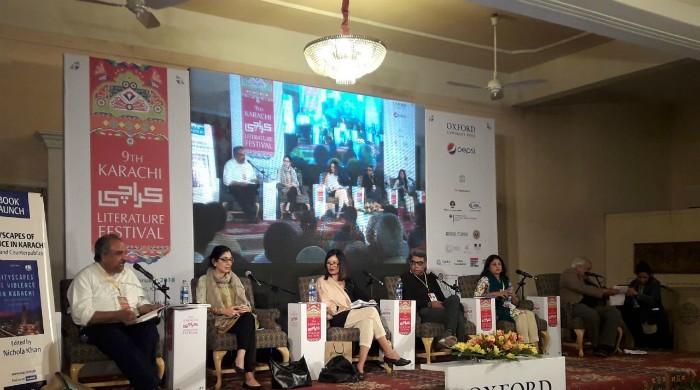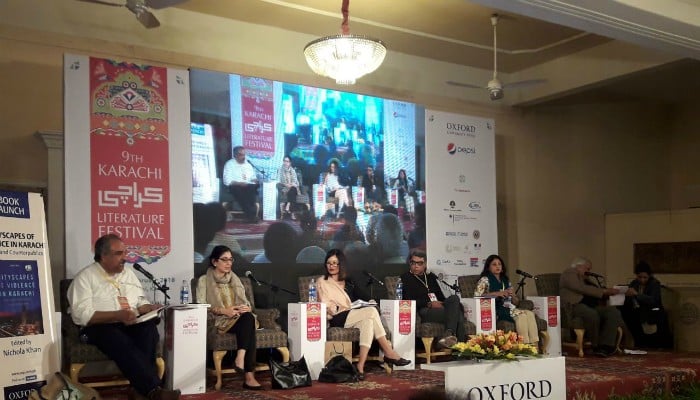

KARACHI: How did a city with "football clubs and banjo music" end up fetishising violence and yet somehow, as the cliché goes, continues to be resilient?
A session "Book Launch: Cityscapes of violence in Karachi: Publics and Counterpublics" held on Sunday at the Karachi Literature Festival brought together journalists, academicians and anthropologists who shared their personal accounts of documenting the violence that has seeped through the very fabric of the city.
The book, edited by anthropologist Nichola Khan, is "fundamentally about the relation of words to the lives and violence in Karachi".
"It is a collection of words and it is important we do not underestimate the power of the words," she added.
From what it means to be a Pashtun in the city and calling it home, to the threats media faces from different players, the book tries to condense "alternate conversations" about the political, economic and sexual violence in the city.
Anthropologist Nida Kirmani's interest in the "stories of marginalised and stigmatised communities" attracted her to the restive Lyari area, whose residents face "multiple kinds of violence". She had been writing as an academician "behind jargons and theory" but the book demanded of her to write a personal account of the political, economic and sexual violence in the area.
"It was almost scary to think of writing it as a personal account," she says.
Kirmani notes how normalisation of violence by the city's youth is not only a by-product of ethnic and political marginalisation but also begs discourse on topics like gender and masculinity.
Veteran journalist Nadeem Farooq Paracha shared anecdotes of his random conversations with the city's downtrodden and the vagabonds. "A poor man once told me I might be poor but I know why I'm poor," Paracha recalled, adding that almost every resident has a "cultural and political idea".
Media's battle for survival in the metropolis has been documented in the book by seasoned journalist Razeshta Sethna, who aptly described media as being "squished" between forces wanting their own narrative promoted.
Sethna lamented that journalists are harassed, intimidated and threatened unless they agree to self-censure. And self-censured they have.
"In the process the reporting gets compromised," she said.
Like all sane voices, veteran architect Arif Hasan lamented the dearth of a proper local government system in a city so huge. He likened the absence of a representative political leadership to a lack of freedom of expression.
"There is no greater violence than not being able to express yourself because there is no one you can express yourself in front of," he said.
Perhaps it is the inevitability of removing violence from the equation when talking about Karachi that led almost all panellists to conclude that violence despite being destructive somehow "has given a sense of self" to marginalised youth.
"Violence has become fetishised [by all and sundry]," said Nichola Khan.
Yet the city's denizens continue to battle through it all. Nichola shared how she was fascinated by kite-flying on her visit to Lalukhet while someone from the audience, a Lahore resident, said she was awestruck by the resilience of the city when she would see shops being forcibly closed one day, and commerce resuming the next day as if nothing had happened.
"It is the everyday mundane activities that give us a sense of the city," Kamran Asdar Ali concluded.
The writer works at Geo. She tweets @Sindhu_Abasi
No comments:
Post a Comment